Inside: Here are 5 fun ways to teach your kids & grandkids about their ancestors’ embroidery and handiwork. Learn to make a story cloth, a meditation cloth, molas, and more!
The Fascinating History of Our Ancestors’ Embroidery and Handiwork!
Do you have a piece of embroidery and handiwork from your ancestors? Something that gives you a glimpse into the story of their lives, talents, hardships, families, or countries they were from?
I have a piece of my maternal grandmother’s needlepoint. My great-grandmother, Elisabeth Marie Lehman gave me a white doily she crocheted which is framed and treasured.
My English and German grandmothers taught me different embroidery and handiwork stitches as well as knitting and crocheting. I learned Swedish Huck Toweling (after my Swedish great-grandmother) and in college, I learned fiber arts of spinning, dyeing, weaving, and tie-dye, batik, and molas.
Embroidery and Handiwork of our ancestors had a utilitarian purpose but were also created for enjoyment, emotional stability, symbolism, and storytelling and established the uniqueness we see in family trees.
A book to give you fascinating insights into how women and men through the ages practiced embroidery and handiwork is Threads of Life: A History of the World Through the Eye of a Needle by Clare Hunter.
Engaging in different kinds of fiber arts is a wonderful way to connect to your ancestors. And, add a 21st-century spin to your creations to make them uniquely yours.
Here are some examples of how you can learn about and teach different embroidery and handiwork techniques to your children and grandchildren while remembering your ancestors.
Embroidery and Handiwork Techniques from Around the World
Embroidery boasts over 300 different stitches and originated in the Pacific Rim countries and the Middle East. Eventually, it was brought to Europe and finally to America. Here are some examples of embroidery and handiwork and their origination:
- Sashiko (Japan)
- Kantha (India & Bangladesh)
- Cross Stitch (Peru)
- Hedebo or Drawn Thread (Denmark)
- Hardanger or Whitework (Norway)
- Needlepoint (Egypt)
- Molas (Panama, Central America)
- Miao Embroidery or Story Cloth (Hmong)
#1 Make a Embroidered Story Cloth
Most embroidery and handiwork throughout the ages tell a story while trapping a memory for future generations.
Have you ever heard of the Bayeux Tapestry? It was embroidered in the 11th century by both men and women and tells the story of events of the conquest of England by the Duke of Normandy. Considered a narrative embroidery, it’s 224 feet long and hangs in the Bayeux Museum in France.
Hmong Story Cloths also tell a story. During the Vietnam War, the Laotian Hmong were recruited by the United States (CIA) to help during the war. When the Communists took control of Laos in 1975, the Hmong fled to refugee camps in Thailand. While there, the Hmong men and women began making embroidered story cloths of their village life, war, and escape to refugee camps. Today, these pieces are housed in museums all over the world. (See: Grandfather’s Story Cloth by Linda Gerdner)
Many of your ancestors could not read or write, but they knew how to tell a story with a needle and thread that would last through the ages. Ask your parents, grandparents, and other family relatives who do this type of fiber arts:
- Why did they make them?
- What materials did they use?
- The meaning behind them?
- What stories do they tell?
Creating Unique Story Cloths
Have your children/grandchildren create a story cloth (of sorts) of different activities they did with you. If your kids/grandkids are young—make it simple. Instead of using embroidered figures of people, use different symbols that illustrate your activities together.
Let each child choose different items that tell a story or create a remembrance of the activity. Embroider the symbols in place and have each child talk about their “story cloths.” If you connected ancestors to these activities–talk about them as well.
Supplies
- Different symbols that represent activities children/grandchildren did with their parents/grandparents. We chose metal pieces, buttons, noodles, fabric, plastic animals and pieces, paper flowers, etc.
- Embroidery hoop
- Embroidery needles and floss
Directions
- Arrange all of the pieces on the fabric. To make it easier for children, hot glue the items in place before stitching them
- Stitch each item in place using a needle and thread. Teach your children/grandchildren how to split embroidery floss, thread a needle, and make a knot.
- Talk about the story each piece symbolizes and the ancestors
#2 Molas: Applique Embroidery from Panama & Central America
If your ancestors are from Panama or Central America—undoubtedly you are familiar with molas.
Guna (previously spelled Kuna or Cuna) Mola’s are beautifully handmade embroidery pieces created by the indigenous Guna people from Panama and Columbia. In the Guna language, “mola” means blouse or clothing” and is part of the women’s traditional clothing—usually a panel worn in the front or back of their blouses.
Traditionally molas were made from 7-layers of colorful fabrics while others have only 2 layers. It’s similar to applique only each layer of fabric is cut, folded back, and hand-stitched, revealing each succeeding layer.
Different patterns found in nature are the main designs of molas—flowers, birds, animals, reptiles, etc., with the predominant colors of red, black, and orange.
They are not easy to make. As a Fiber Arts major in college, I made a mola. It was a ton of work and my result was mediocre.
For my grandkids, I simplified the process of making a mola and used 4-layers of cardstock paper. Try this—much easier and the results are so colorful! We don’t have ancestors from these countries—but learning about different cultures increases our understanding and appreciation of others.
Supplies
- Template: outline of an animal or bird
- Rabbit, Fish, Turtle, Cat, etc.
- 4 Different colors of cardstock paper for each child. The colors should be complementary—or colors on opposite sides of the color wheel that create a strong contrast
- Glue
Directions
- Download a template of an animal, bird, etc.
- Using your template, trace onto the colored cardstock paper and cut out.
- Then create larger sizes of your animal template. For example, if you are using a turtle, cut out the turtle from one cardstock color. Then lay the cut-out turtle on another cardstock paper and cut the turtle out leaving a ¼” edge. Do this with all 4 cardstock colors
- Arrange your animals on a cardstock piece of paper and then add different shapes, lines, and dots, cut from the paper, and glue onto your mola
Here are websites that teach different techniques about molas:
Video demonstrating how to make a mola click here
To purchase mola-like fabric, click here
#3 Embroidery and Handiwork: Make a Meditation/Healing Cloth
Ask anyone who does handiwork or fiber arts and they will tell you it brings a sense of peace and calm into their lives. I believe, ONE of the reasons my ancestors became “hooked” on various fiber arts was this reason.
If you’re feeling stressed, try making a meditation, healing, or contemplation cloth (they’re becoming very popular). The idea is to use a simple running stitch on a piece of cloth that “speaks to you.” Using a running stitch, create horizontal lines that are repeated over and over across the cloth. During the process, meditate, contemplate, practice mindfulness, and breathe deeply.
It’s interesting that in the 21st century to experience more peace, we are going back to what our ancestors did—create simple and meaningful embroidery and handiwork.
If you’re teaching your children or grandchildren this, try using different breathing techniques found in this charming book: Breathe Like a Bear by Kira Willey.
I saw a short demonstration of a meditation cloth by Emma Freeman. She used plain Mudcloth and a simple running stitch.
Mudcloth is very unique and plain mudcloth is difficult to find. It dates back to the 12th century in Mali—a West African country. It’s made from handwoven cotton fabric and is dyed using fermented mud and plant dyes. The process can take up to 4 weeks and has great cultural significance throughout Africa. Some pieces of Mudcloth have symbolic patterns on them that were worn by hunters for protection and as an expression of national or ethnic identity.
My favorite is the deep brown/rust color made by using iron-rich mud that has been fermented over a year. I was not able to find a big enough piece of mudcloth but I did find a beautiful piece of fabric in Heidelberg, Germany.
Supplies
- A plain piece of fabric that you are drawn to and like in both color and texture. It should be at least 18” x 18” or 12” x 14”.
- Embroidery floss
- Embroidery needle
Directions
- Using a running stitch, create horizontal lines across your fabric.
- While you are stitching; practice mindful breathwork. Breathe in deeply for 5 seconds; hold for 4 seconds and slowly let your breath out through your mouth.
- Focus on positive thoughts—things that make you happy (family, friends, loved ones), and reflect on time spent in nature and memorable occasions. This practice will put your body into a parasympathetic mode of calm.
#4 Feeling the Spirit of Our Ancestors Through Embroidery and Handiwork
There are times when we can feel the presence of our ancestors when we are doing the handiwork they did. Other times we feel their presence through a gift they leave us.
When my little granddaughter was born, her mother wrapped her in a muslin blanket from her great-grandmother. Even though my granddaughter was just a baby—she LOVED that blanket. As she grew into the toddler stage, she called it her “towel.” and carried it with her everywhere. When she went outside, she wanted the blanket wrapped around her head or neck and at bedtime, it was in her hand.
Eventually, with all the washings, the “towel” began to fall apart. She started carrying around the pieces of her “towel,” and whenever she came up to our house to visit—she had the piece of her towel clenched tightly in her fist.
I believe that on some level she felt the spirit of her great-grandmother in that blanket or a bond between the two forged in another life. Perhaps one day we’ll find out…
Have you experienced something similar with a blanket, toy, or other remembrance of an ancestor that speaks to you?
#5 Books About Handiwork for Adults & Children
Here are some wonderful children/adult books about different types of handiwork
- Grandfather’s Story Cloth by Linda Gerdner
- Drawn Together by Minh Le
- The Most Beautiful Thing by Kao Kalia Yang
- Mola: Cuna Life Stories and Art by Maricel Presilla
- Threads of Life by Clare Hunter
- Embroidery: A Step-by-Step Guide to More than 200 Stitches by Lucinda Ganderton
Please add your experiences with embroidery and handiwork in the comment section below.
Other posts about ancestor activities:
15 Super Fun Ways of Playing With Nature’s Best Toys!
Teaching Fiber Arts to Kids: Learn How to Dye, Spin & Weave Like Your Ancestors
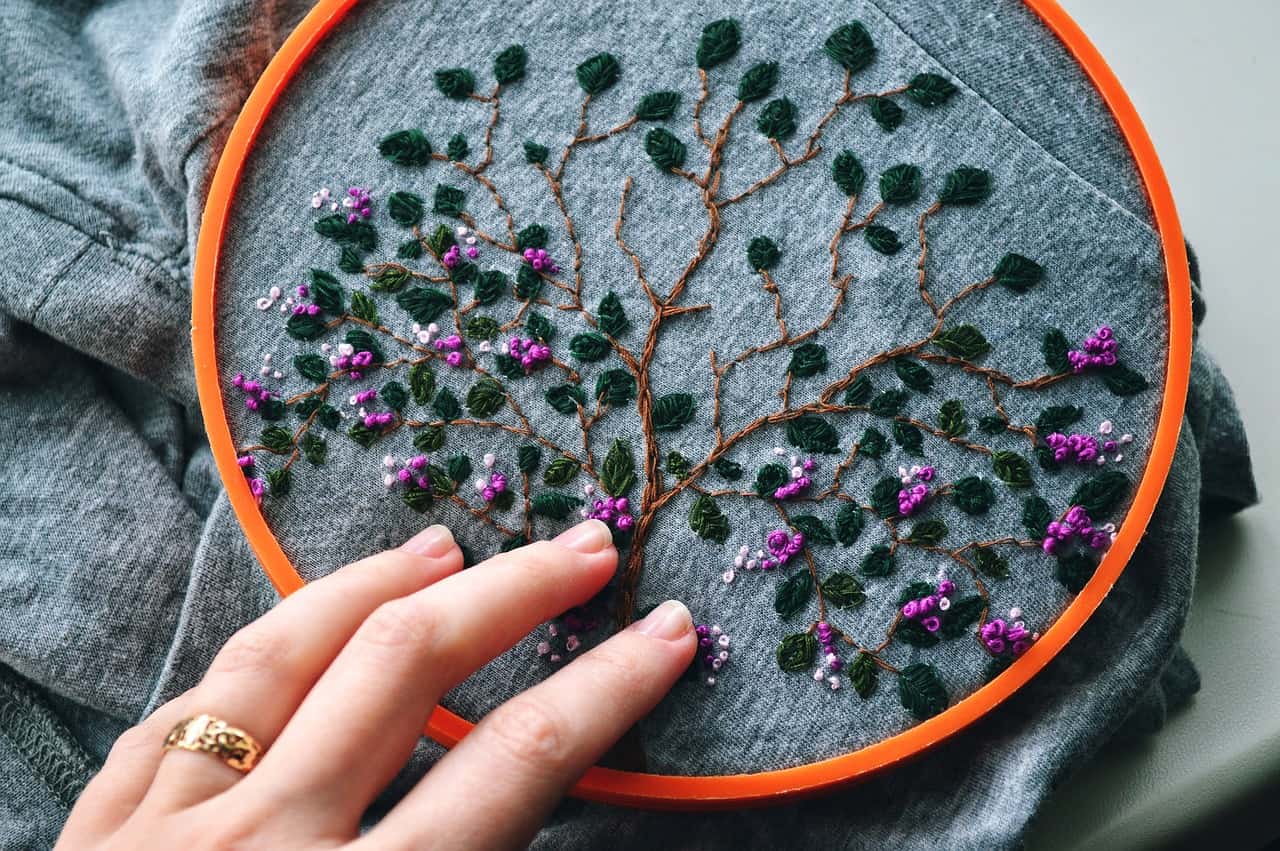

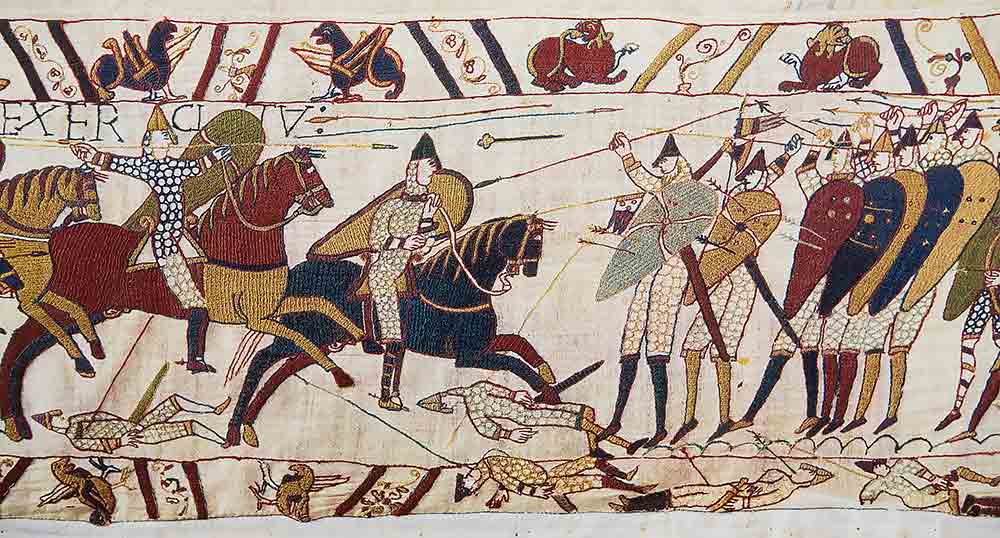
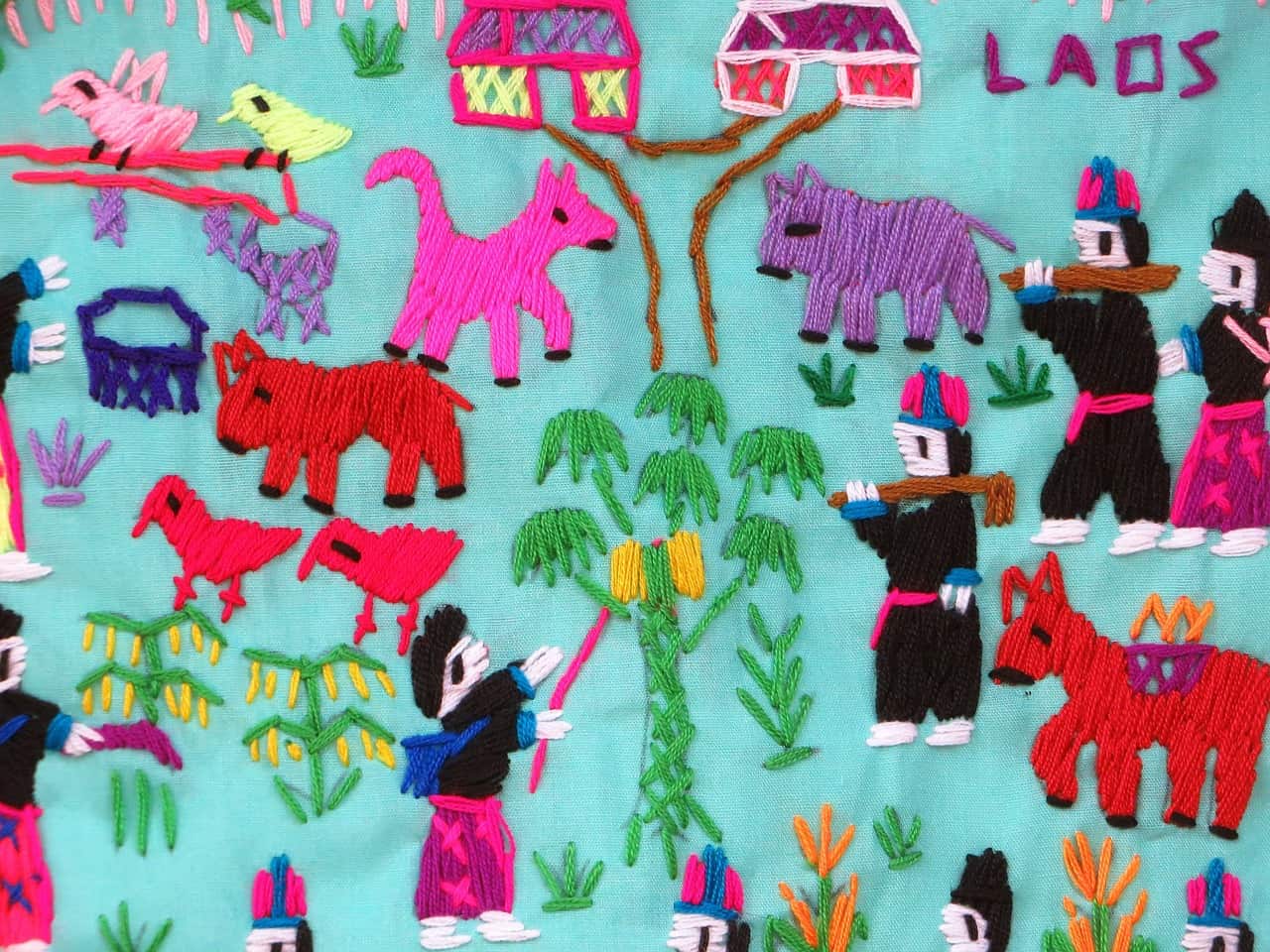
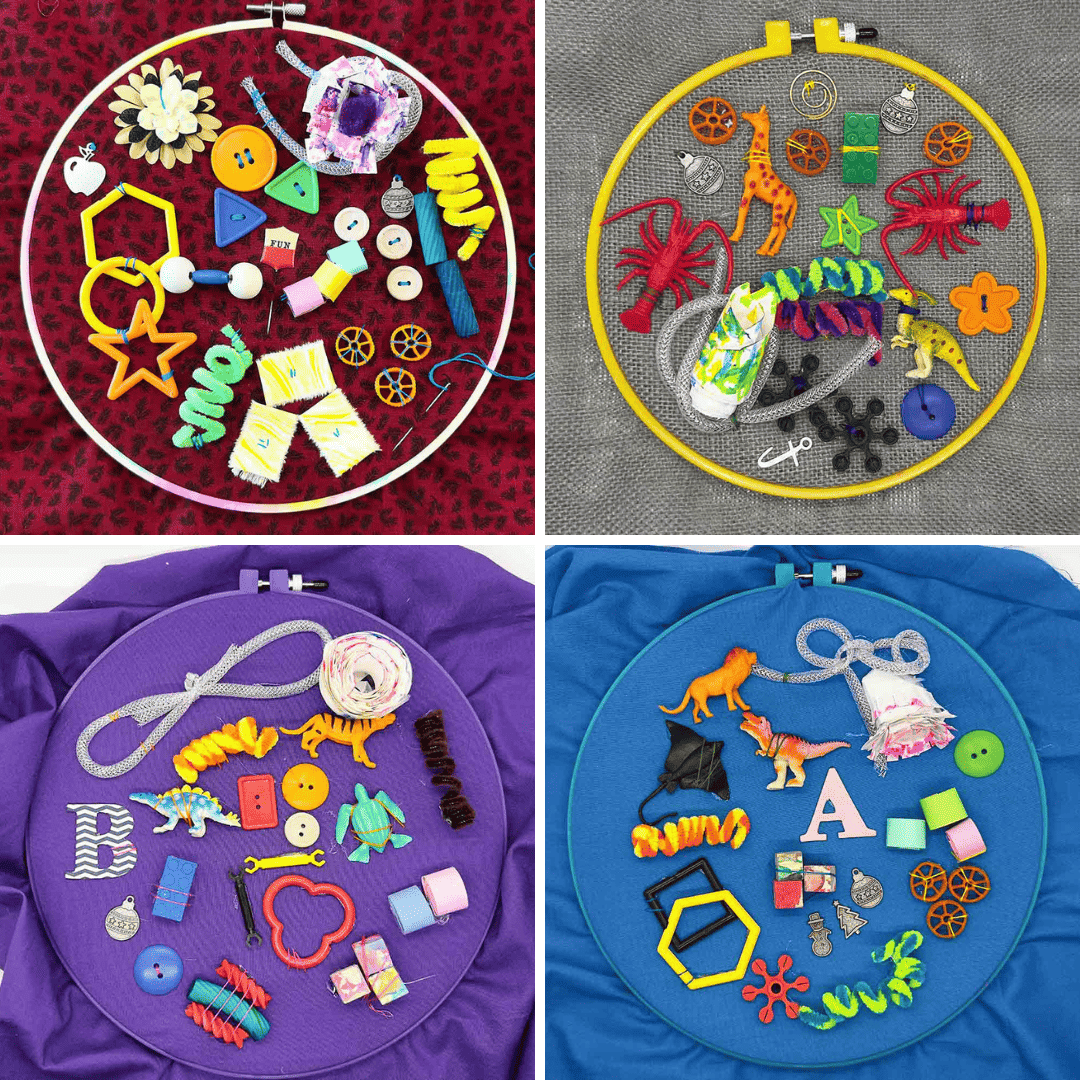
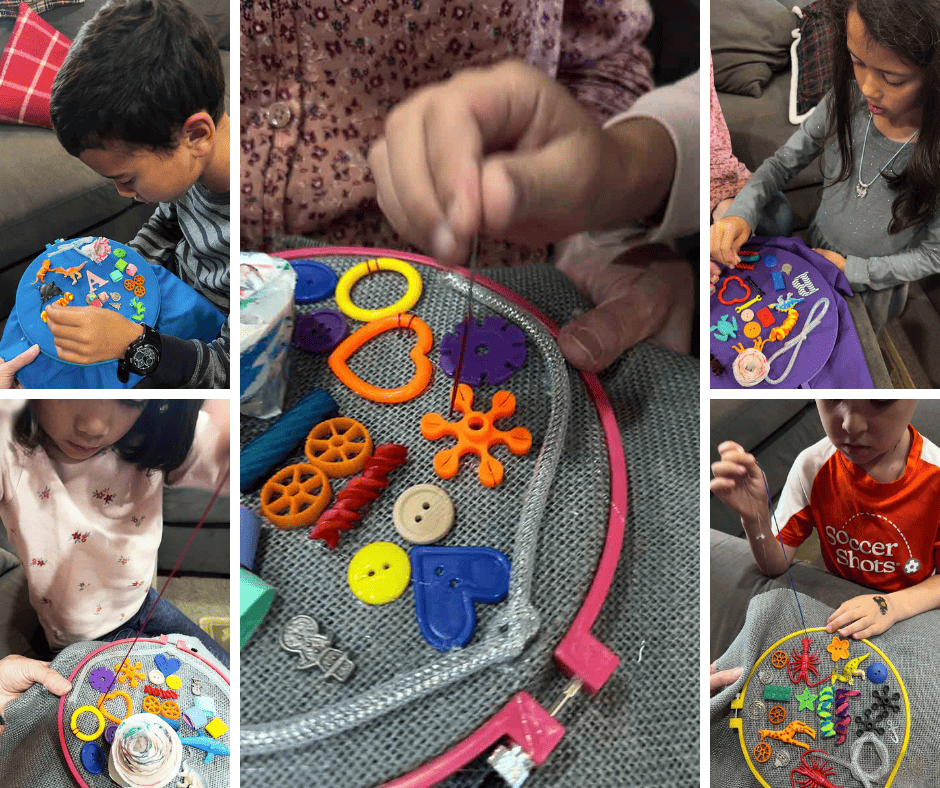
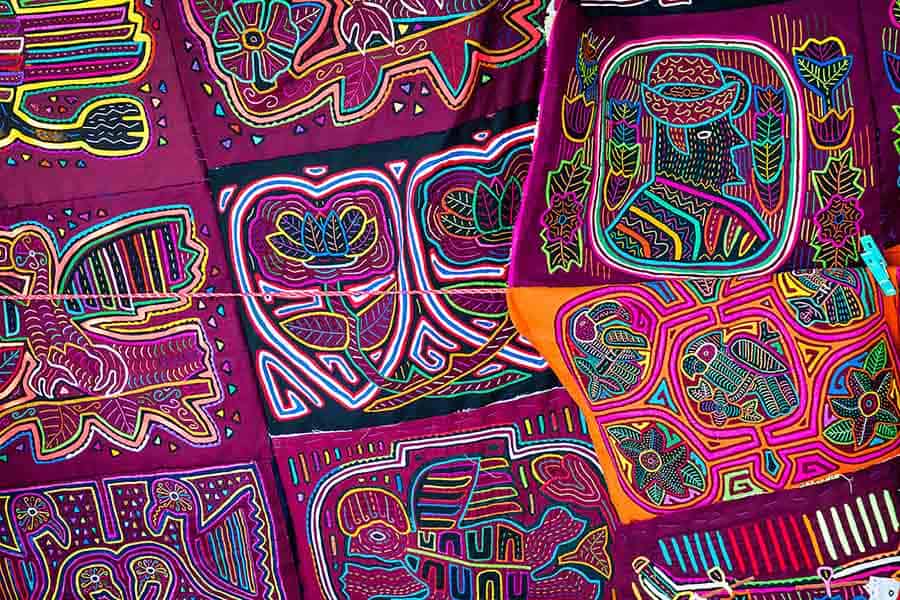
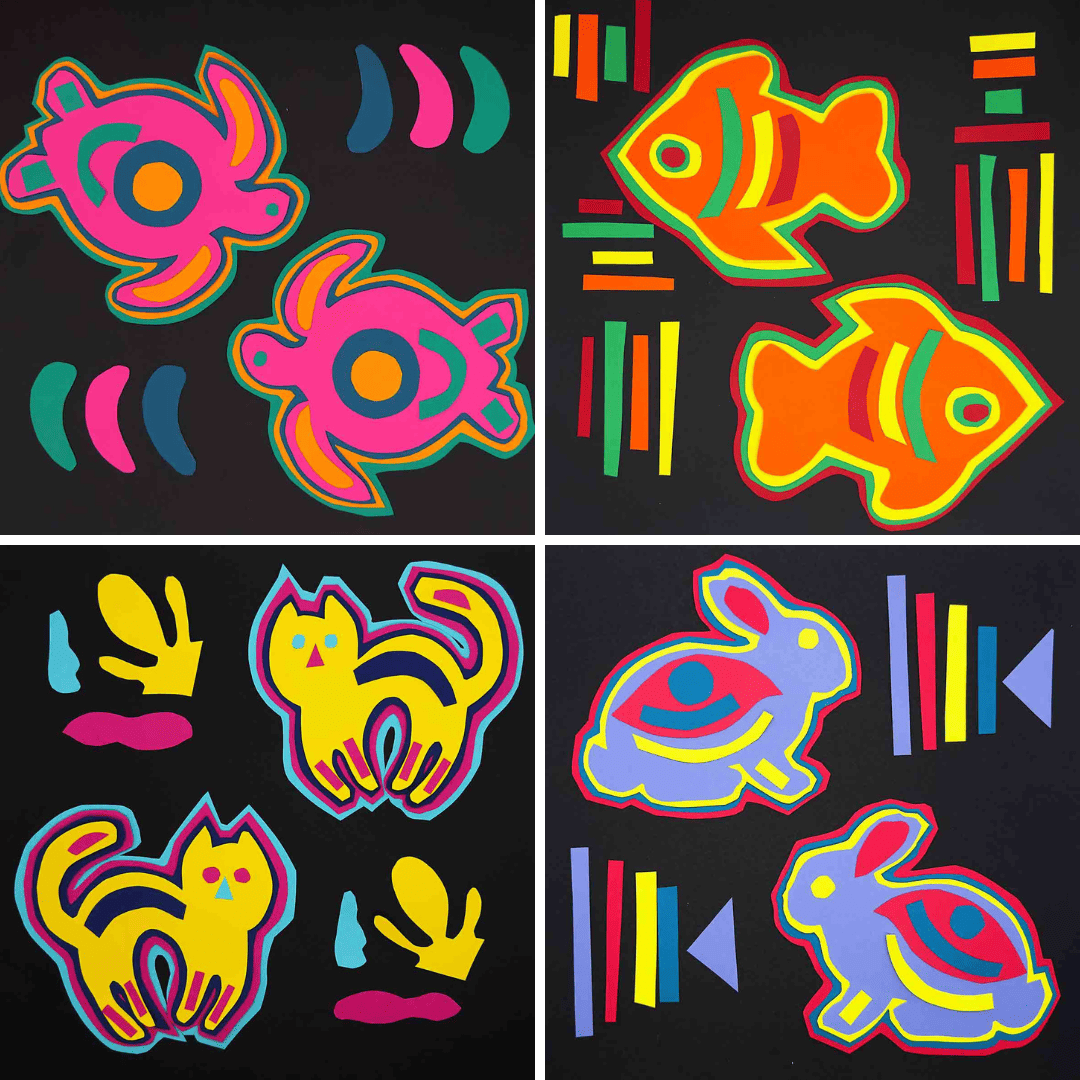
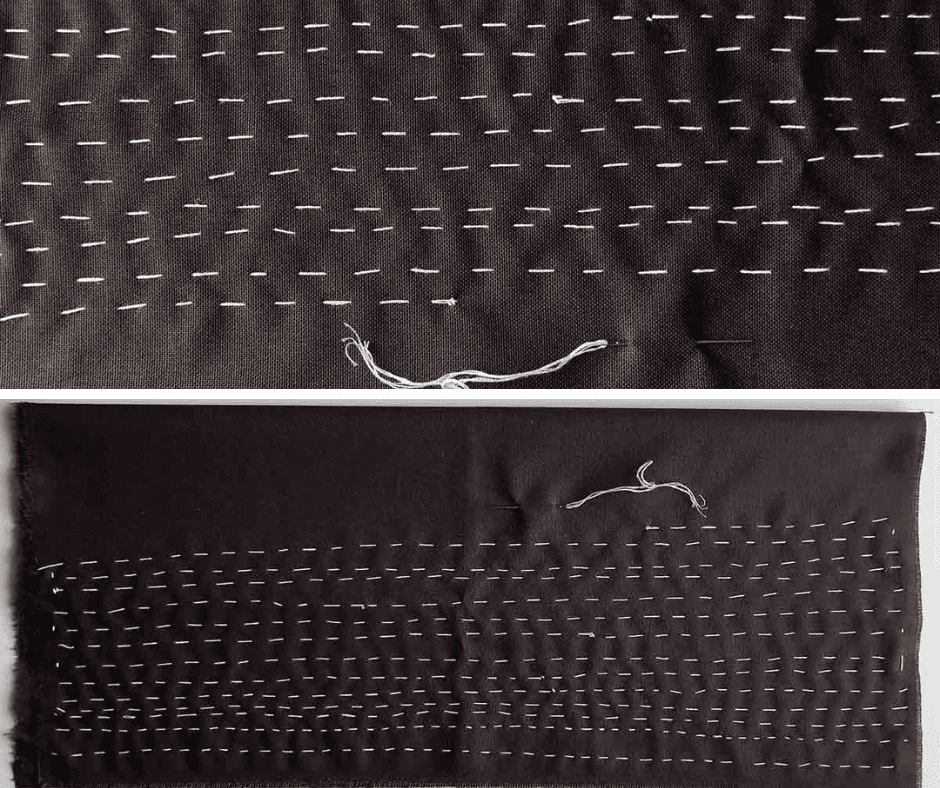
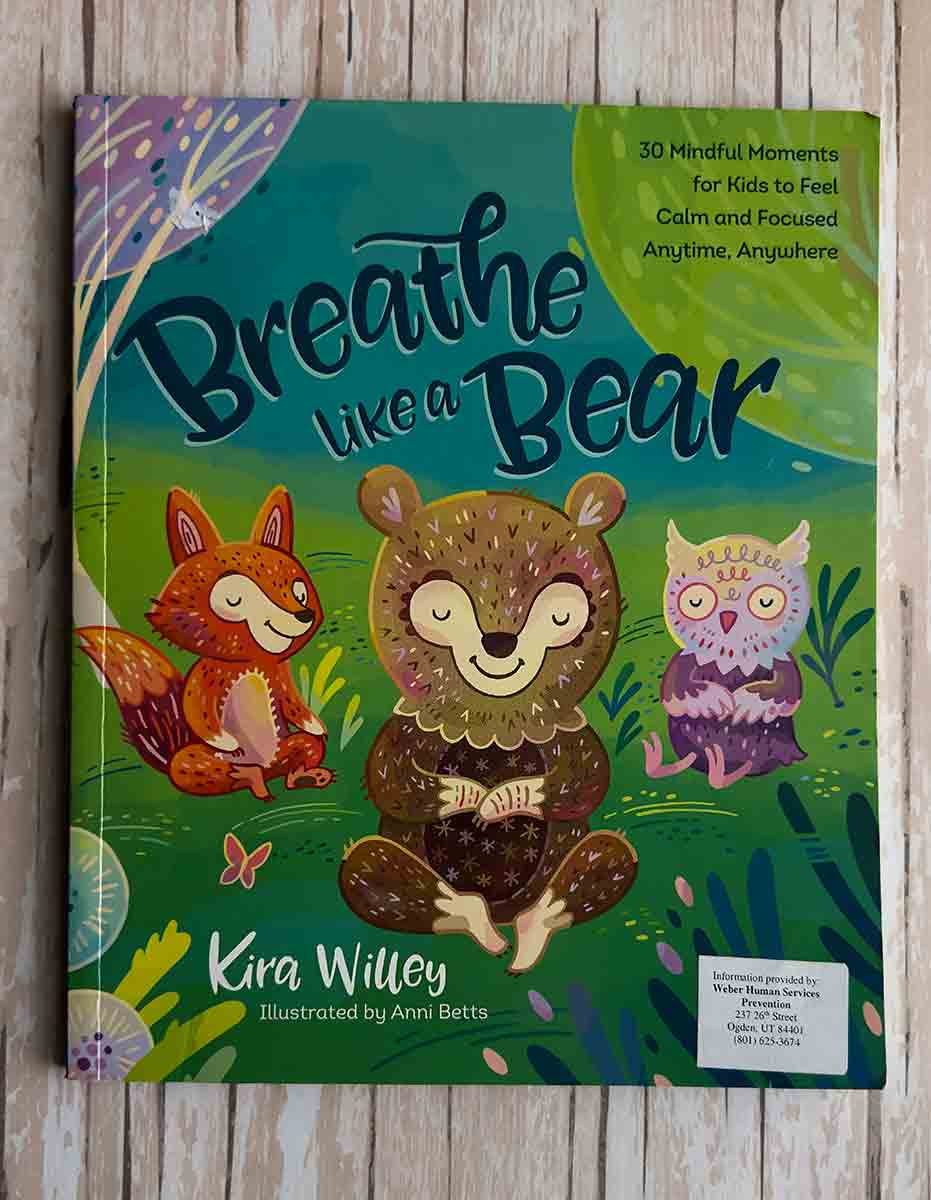
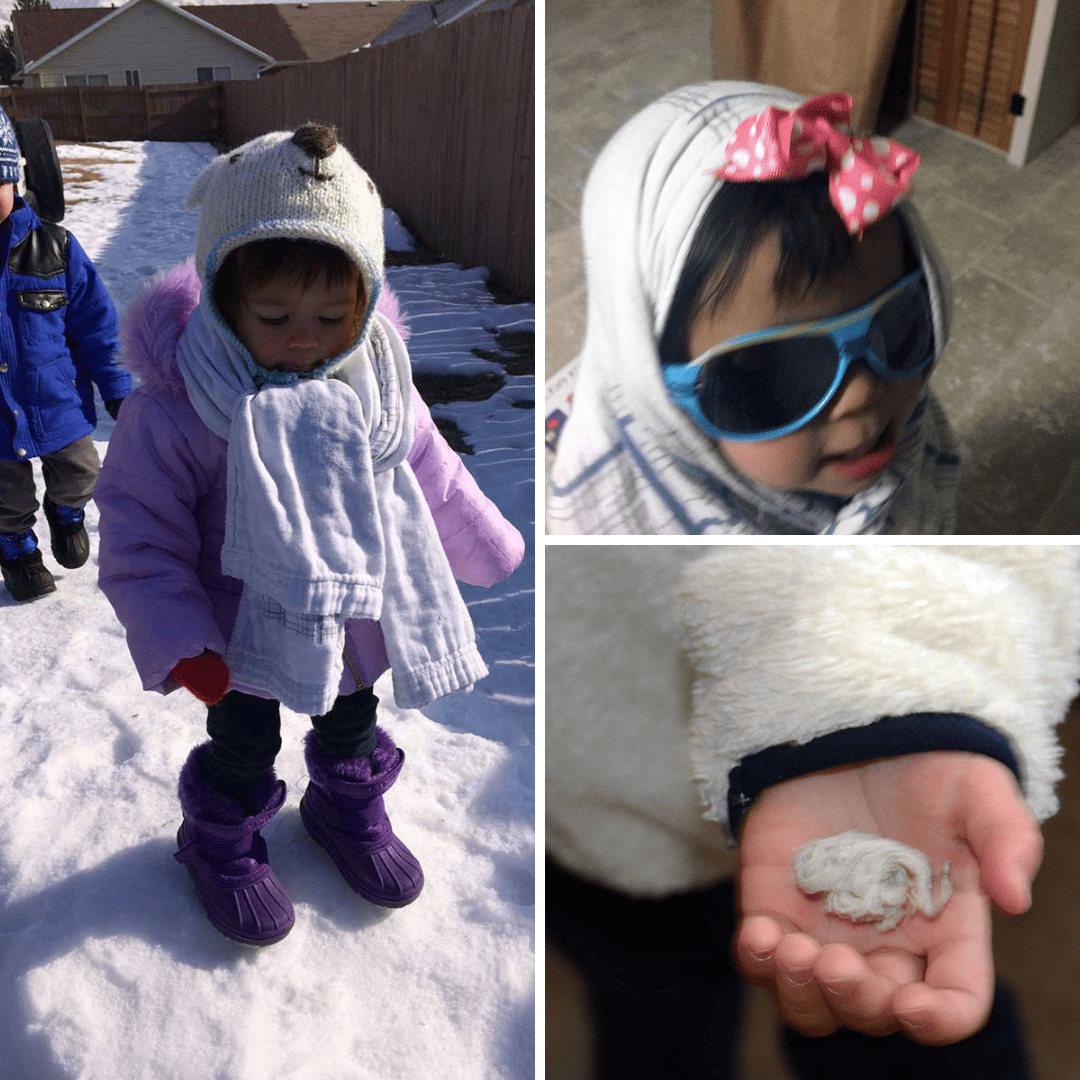
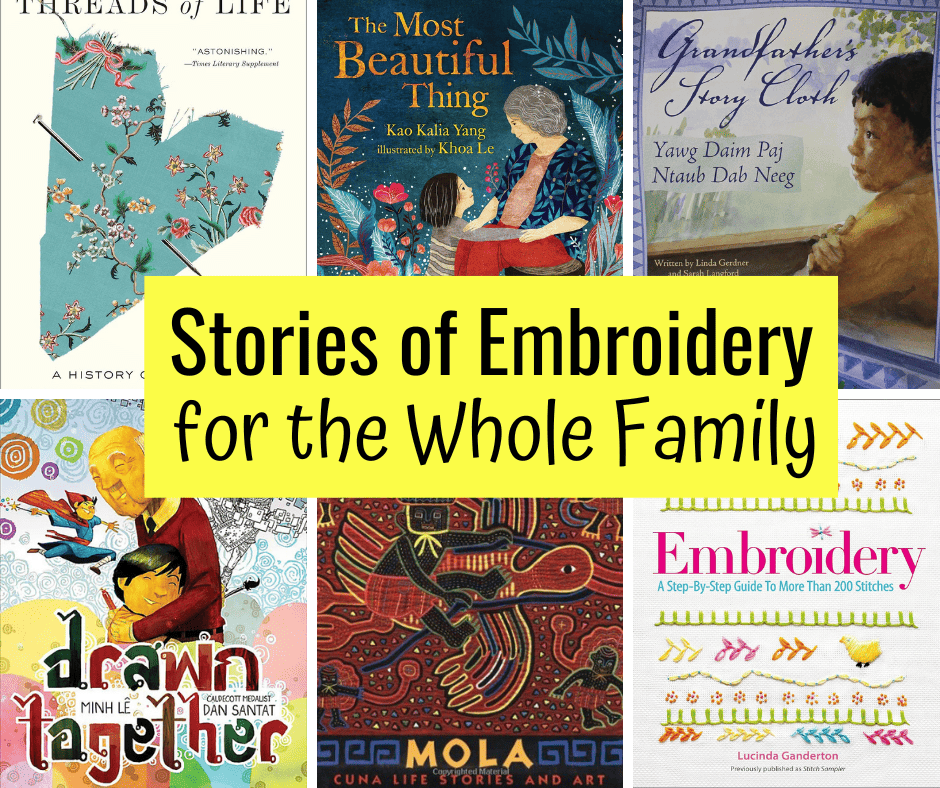


Leave a Reply